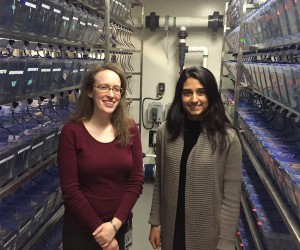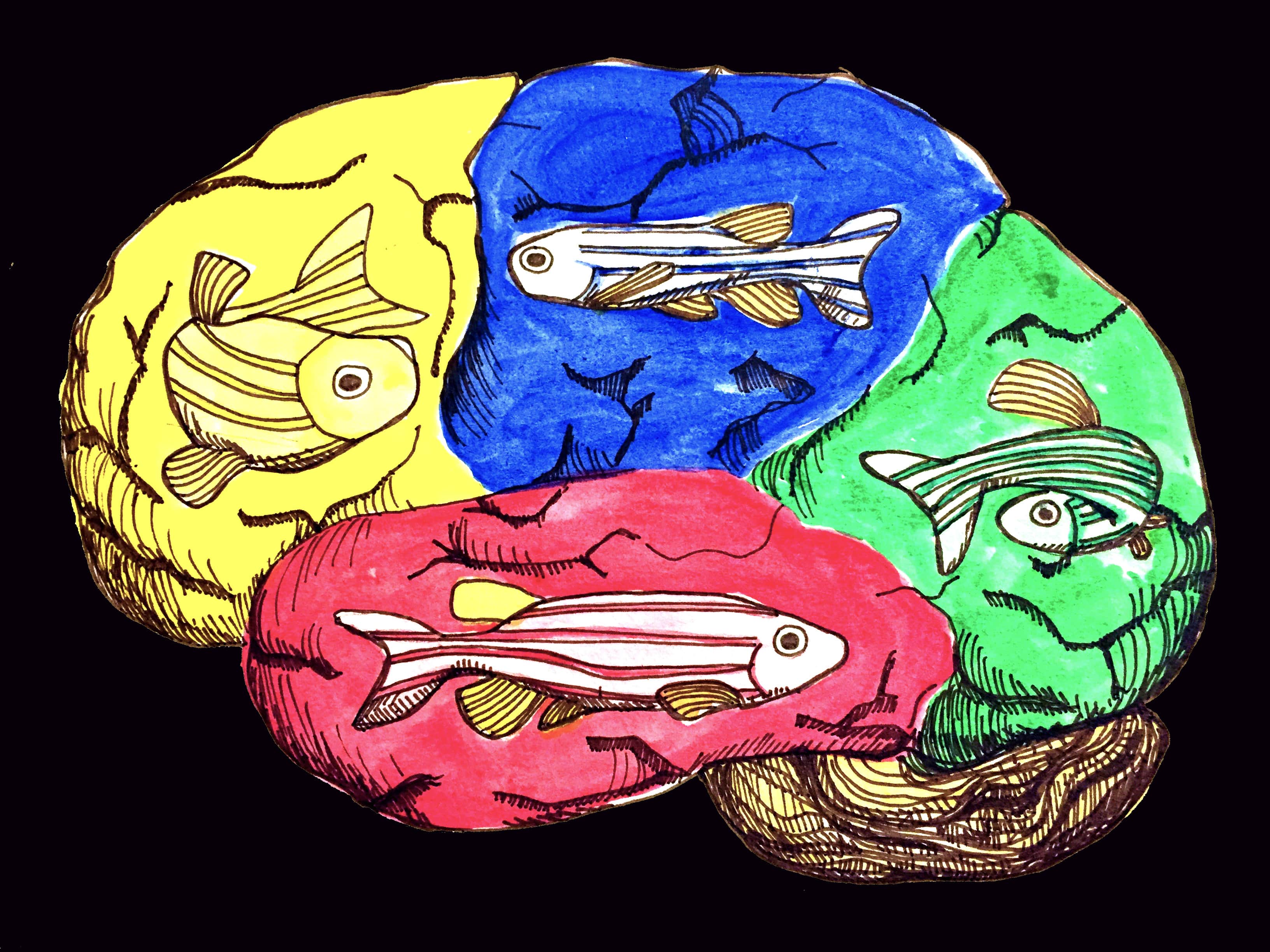If your childhood home had a television set, you can probably tell me how to get to Sesame Street. Those who outgrew the show before 2015 befriended the original cast of characters — muppets like Big Bird, Ernie and Bert — and remember songs from “Elmo’s World.” We missed out on meeting the newest muppet, Julia, and singing “The Amazing Song” — two important additions. Julia is the first autistic character on Sesame Street, and “The Amazing Song” teaches young viewers about their friends living with autism spectrum disorder.
What “The Amazing Song” does not touch on is that autism spectrum disorder (ASD) can be a devastating diagnosis. While oftentimes, autistic individuals are amazing and go on to live full and meaningful lives, many are severely limited by symptoms whose origin and cure are both unknown. One in 68 children today is diagnosed with the disorder (one in 42 boys and one in 189 girls) — each child at a different level of functionality — and despite its constant rise in prevalence and its enormous impact on those affected, ASD is still not completely understood, and there are still no effective pharmacological treatments for its core symptoms. Today, through research and clinical work, professionals have accumulated a lengthy list of symptoms and genetic indicators and designed several effective psychotherapeutic techniques. Awareness, as in the case of Sesame Street, continues to spread. Yet for most researchers, clinicians and families, this is still barely scratching the surface.

Image courtesy of Marine Science Today
Professors Ellen Hoffman and Antonio Giraldez at the Yale School of Medicine are a couple of those researchers. In their recent project, Hoffman, Giraldez and their teams combined methods of gene discovery and drug discovery to uncover more information about autism. Using zebrafish as model organisms, the team discovered that compounds resembling estrogen actually reverse the behavioral manifestations of an autism-like genetic abnormality in mutant organisms. Though many scientific hurdles stand between current findings and human applicability, estrogen may hold promising answers for future ASD research and treatment.
A is for Autism
To quote the wisdom of Sesame Street’s Abby Cadabby, having autism means certain kids’ “brains just work a little differently,” and some things are harder for kids with ASD. Abby is right; at its most severe, autism eliminates communication and social motivation, and it creates debilitating resistance to change. Specific symptoms range from loss of language and seizures to repetitive behaviors and self-injury, and those with ASD may face difficulties managing aggression, getting enough sleep, and recognizing social cues. Because the severity varies along a spectrum, some children are high functioning and display few symptoms, while others are incapable of participating in a typically functioning social environment. Even playing outside can be challenging for a child with ASD who experiences hypersensitivity to ordinary stimuli, like lights and sounds.
Despite the significance of ASD symptoms, the ability to even receive an autism diagnosis is new; autism was first described in 1943 and was only officially recognized in 1980. Extensive research on ASD did not kick off until the 1990s, and though several genes have been implicated in the disorder, it is still unclear how disruptions in these genes lead to the clinical manifestations of autism. Giraldez, a Yale professor of genetics and a father himself, was devastated to see how the social repercussions of autism could sever a crucial bond between parent and child. Together with Hoffman — an assistant professor at the Yale Child Study Center — he and the rest of their team sought to gain information about the molecular mishaps that lead to ASD by studying an unlikely model organism: the zebrafish.
Making a splash in autism research

Image courtesy of Hoffman Lab
Hoffman and Giraldez began their project in 2008 by collaborating with Matt State, who had identified a specific gene of interest: CNTNAP2. A mutation in CNTNAP2 — a gene that had been identified three years prior — is strongly linked to ASD symptoms in a small Amish population in Pennsylvania. Using molecular scissors known as zinc finger nucleases, the Yale team disrupted the same gene in zebrafish and observed the outcome in their offspring. They found that zebrafish larvae that were double mutants for CNTNAP2 were far more active at night compared to their normal counterparts. This finding, or — as Giraldez calls it — the “behavioral fingerprint,” was only the start of their process. “If you observe behavioral changes in the mutants, you then try to find a drug that will reverse that deficit,” Giraldez said.
The team did just that. After taking the behavioral fingerprint of the mutant zebrafish larvae, they collaborated with Jason Rihel at the University of London to compare the observed behavior to that of both normal embryos as well as embryos that had been exposed to hundreds of different drugs. Because of the rapid rate of fertilization in zebrafish, it is possible to obtain hundreds of larvae and expose large numbers of them to each drug. The larvae can then be grouped by symptom, enabling the researchers to categorize both the drugs that cause normal embryos to express mutant traits as well as those that cause the mutant embryos to display normal behaviors. Another zebrafish perk is that they are transparent, allowing researchers to observe early stages of neural development and early behavior in embryos.
To their surprise, Hoffman, Giraldez and their colleagues discovered that compounds resembling estrogen, a female hormone, limited the expression of abnormal behaviors in mutant fish. Because autism occurs about four times more often in males than females, these results were particularly intriguing. “From a genetic standpoint, it looks like there is some type of female protective factor,” Hoffman said. Giraldez also expressed enthusiasm about this possibility. “This data could tell us about how the physiological differences we see every day could be influencing things that are not as simple as what’s on the outside,” he said.

Image courtesy of Yale School of Medicine
But despite both researchers’ initial excitement, their immediate goal is not to develop autism drug therapy. They are investigating the impacted circuitry, and their utilization of drug research is actually a method to uncover universal genetic causes of ASD. “We primarily are trying to understand what genes that are associated with autism risk do,” Hoffman said. “How come when these genes are disrupted they have the effects that they do?” This problem runs much deeper and is one they have just begun to tackle.
Big fish in an enormous pond
Although mutations in CNTNAP2 have been linked to ASD and epilepsy within a specific ethnic group, Hoffman emphasized the universality of their research. “Identifying these very rare mutations of big effect can teach us something important about the biological mechanisms underlying autism,” Hoffman said. “We think that whatever mechanisms we identify through this research will be crucial to future understanding of more common forms of autism.”
Their next steps are numerous. As they move into further research, many more factors — and organisms — come into play. Hoffman hopes this research will lead to studies involving rodent models of ASD and eventually humans with ASD. “Using the simple model systems is a good way to get at mechanisms that underlie a disorder.” Hoffman said. “But we are still looking to identify the underlying circuits that are disrupted in mutant fish and are therefore far from recommending any type of hormone treatment for human patients.”
Fishing for future projects
Through this project, Giraldez garnered valuable information about the realm of research possibilities. “In an area such as autism, which most people think can only be studied in humans, important discoveries can come from the most unassuming areas of a laboratory,” Giraldez said. Rather than constraining project ideas to the obvious, Giraldez encourages researchers to think beyond what was once feasible.
Currently, there are a vast number of opportunities for creative scientific exploration, both within and outside the field of autism research. And by taking on outside-the-box projects — whether that means generating mutations in zebrafish or adding a new character on a beloved TV series — we have the potential to create a powerful impact.
Extra Reading:
Hoffman, E. et al. (2016). Estrogens Suppress a Behavioral Phenotype in Zebrafish Mutants of the Autism Risk Gene, CNTNAP2. Neuron, 89(4), 725-733.
About the Author:
Aviva Abusch is a sophomore Cognitive Science major in Pierson College, specifically studying the neurological, psychological and societal effects of autism spectrum disorder. She is the current YSM Production Manager and a regular writer for both the magazine and The Scope.
Acknowledgements:
The author would like to thank Professors Ellen Hoffman and Antonio Giraldez for their time and insights in discussing their work.

